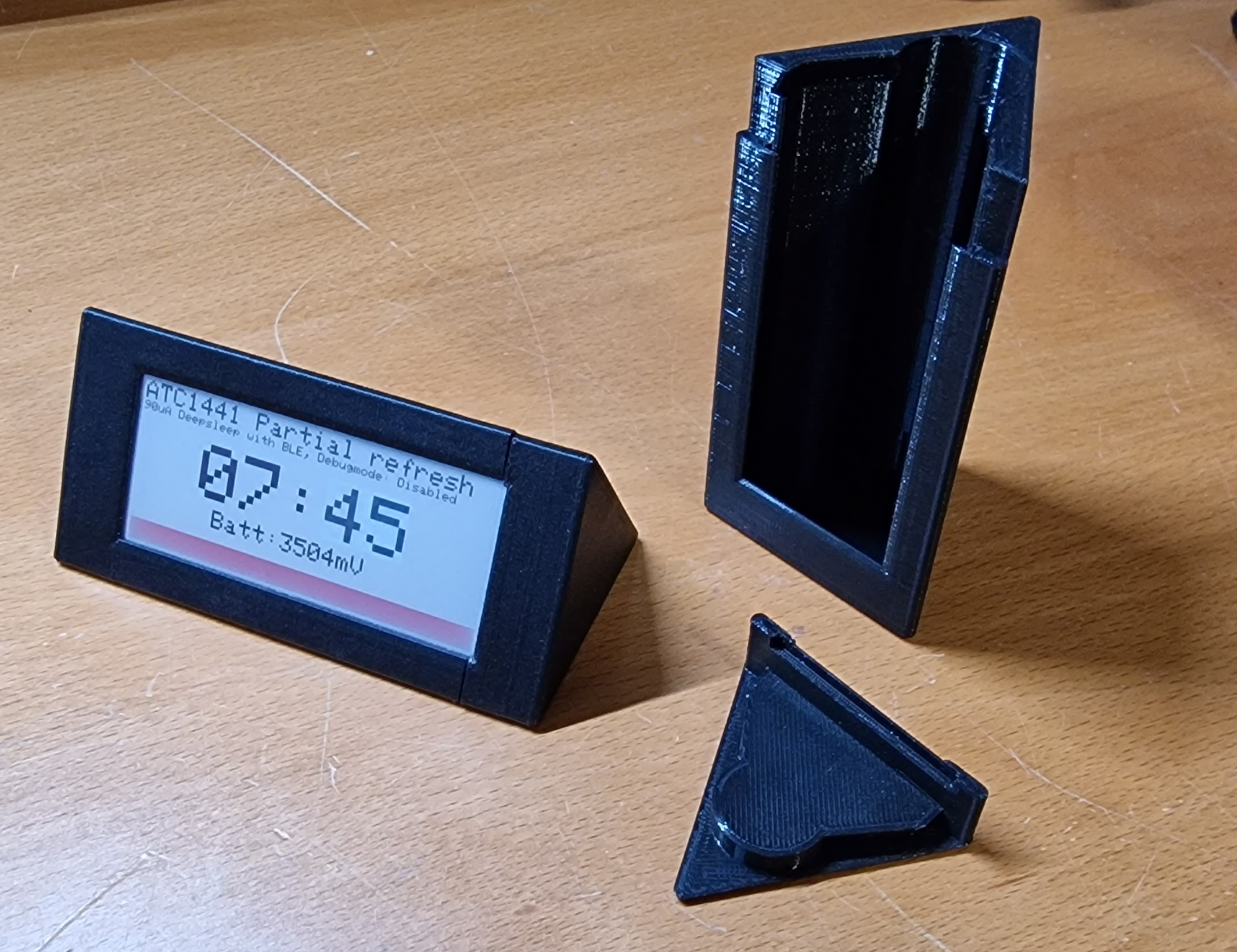Low Power Challenge: E-Paper Shelf Tag Becomes Ultra-Frugal Clock
Over the past two decades, e-paper has evolved from an exotic and expensive display technology to something cheap enough to be used on supermarket price tags. If such electronic shelf labels are now easy to find, their reuse is often tricky due to a lack of documentation. Luckily, [Aaron Christophel] was able to reverse engineer many types of shelf labels, and he demonstrated the results by turning one into an ultra-low-power clock called Triink. It's based on a 128×296 pixel e-ink display paired with a BlueTooth Low-Energy nRF52832 SoC and uses just 65 micro-amps on average: low enough to run it for over a year on a single charge of battery.
 Power on the left, e-ink on the right: The custom PCB is also smart and compact
Power on the left, e-ink on the right: The custom PCB is also smart and compact
The clock is housed in a simple but effective case: a 3D-printed triangular prism with a slot for the screen and space for the 18650 lithium battery. One side can be opened to access the internals, although this is really only needed to charge the battery. You can see how smart it all fits together in the video embedded below.
The processor spends most of its time in sleep mode, only waking up once a minute to update the display. In order to save power, [Aaron] wrote this routine to only update pixels that actually changed. Once per hour, it completely refreshes the screen to avoid burn-in. A built-in real-time clock keeps track of the time and can be adjusted via BlueTooth using a smartphone app.
If you have a bunch of similar e-ink shelf labels gathering dust, you can find all the design files and software to make your own Triink on [Aaron's] hackaday.io page. In fact, you might want to browse some of his other projects as well: he successfully reverse-engineered three-color e-ink price tags, for example, and even combined 300 shelf labels into a giant e-ink display. /p>

Over the past two decades, e-paper has evolved from an exotic and expensive display technology to something cheap enough to be used on supermarket price tags. If such electronic shelf labels are now easy to find, their reuse is often tricky due to a lack of documentation. Luckily, [Aaron Christophel] was able to reverse engineer many types of shelf labels, and he demonstrated the results by turning one into an ultra-low-power clock called Triink. It's based on a 128×296 pixel e-ink display paired with a BlueTooth Low-Energy nRF52832 SoC and uses just 65 micro-amps on average: low enough to run it for over a year on a single charge of battery.
 Power on the left, e-ink on the right: The custom PCB is also smart and compact
Power on the left, e-ink on the right: The custom PCB is also smart and compact
The clock is housed in a simple but effective case: a 3D-printed triangular prism with a slot for the screen and space for the 18650 lithium battery. One side can be opened to access the internals, although this is really only needed to charge the battery. You can see how smart it all fits together in the video embedded below.
The processor spends most of its time in sleep mode, only waking up once a minute to update the display. In order to save power, [Aaron] wrote this routine to only update pixels that actually changed. Once per hour, it completely refreshes the screen to avoid burn-in. A built-in real-time clock keeps track of the time and can be adjusted via BlueTooth using a smartphone app.
If you have a bunch of similar e-ink shelf labels gathering dust, you can find all the design files and software to make your own Triink on [Aaron's] hackaday.io page. In fact, you might want to browse some of his other projects as well: he successfully reverse-engineered three-color e-ink price tags, for example, and even combined 300 shelf labels into a giant e-ink display. /p>
What's Your Reaction?






















